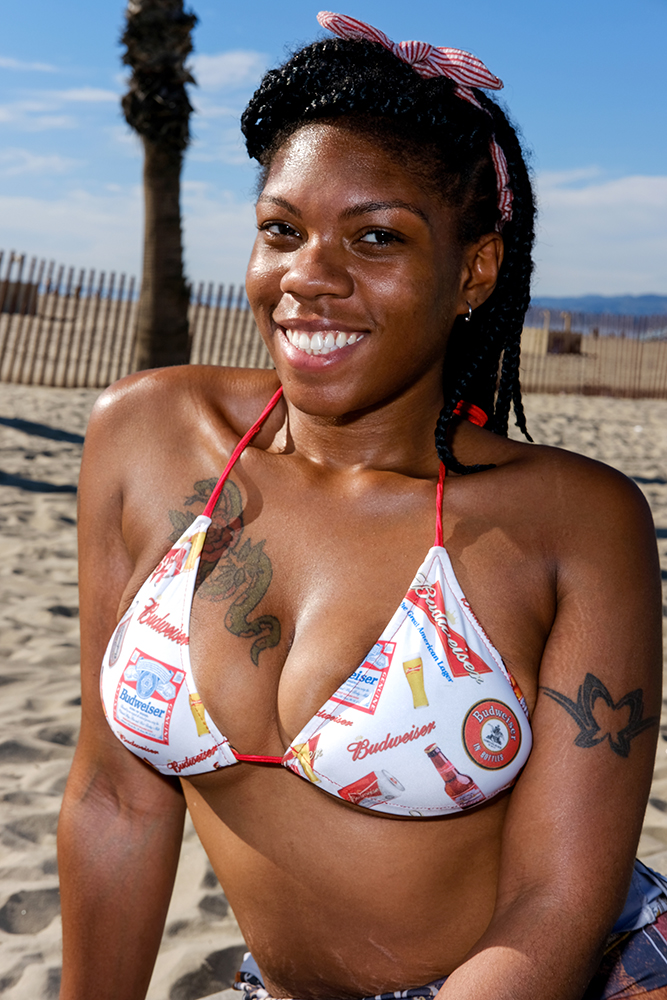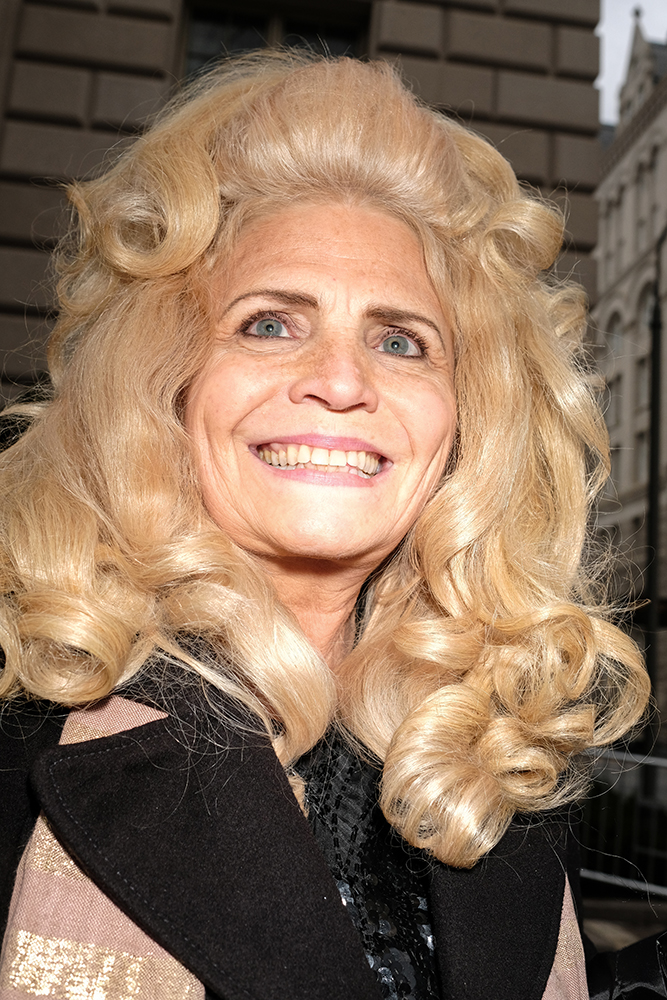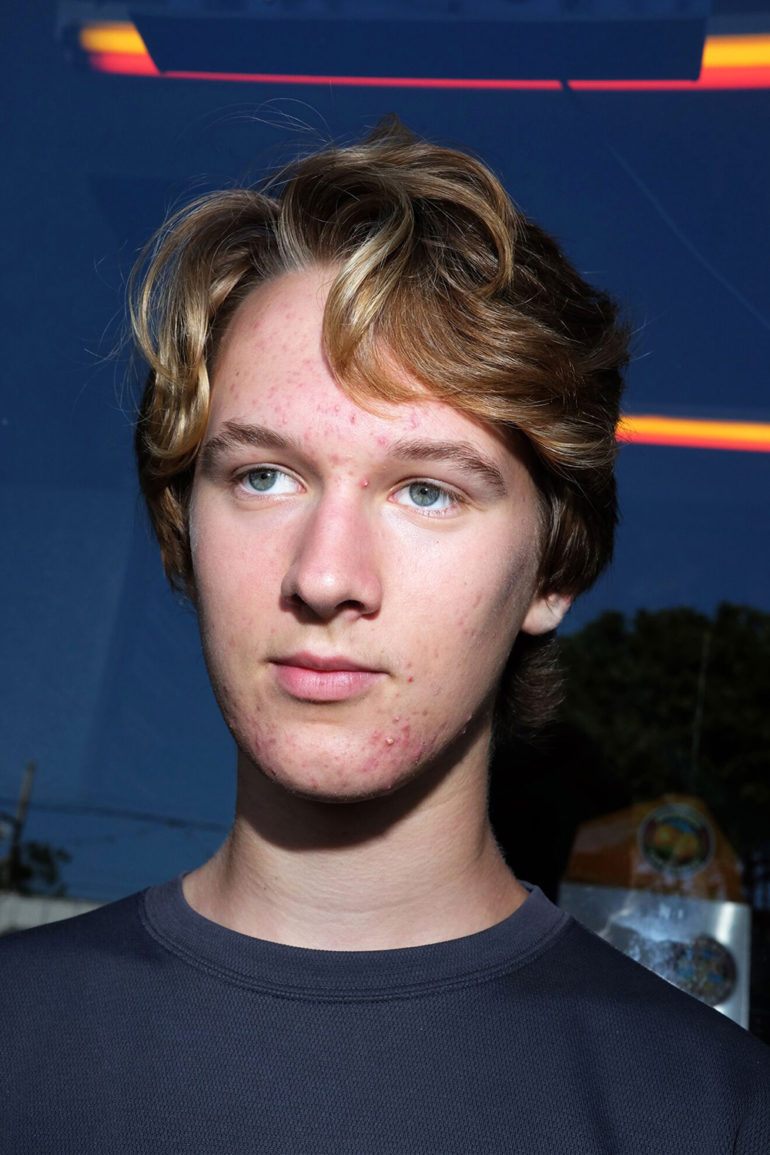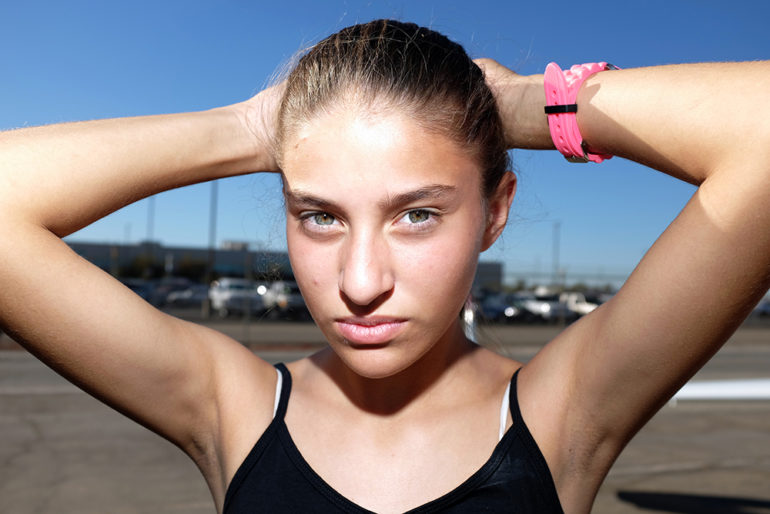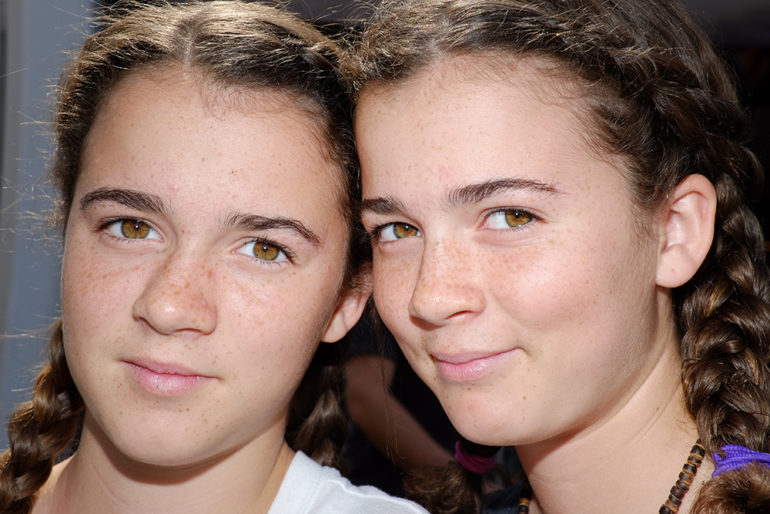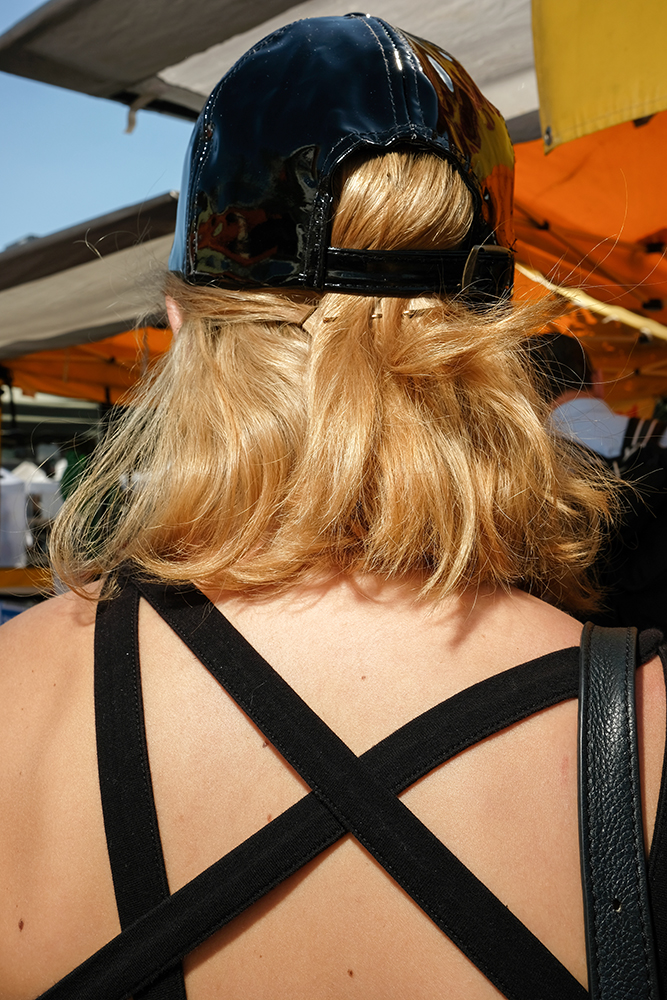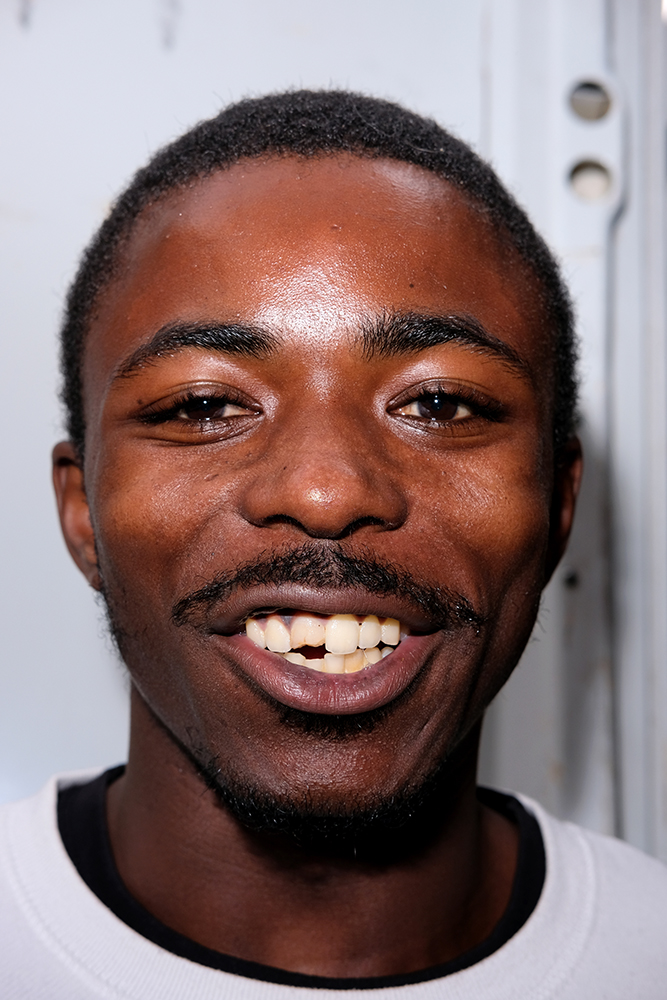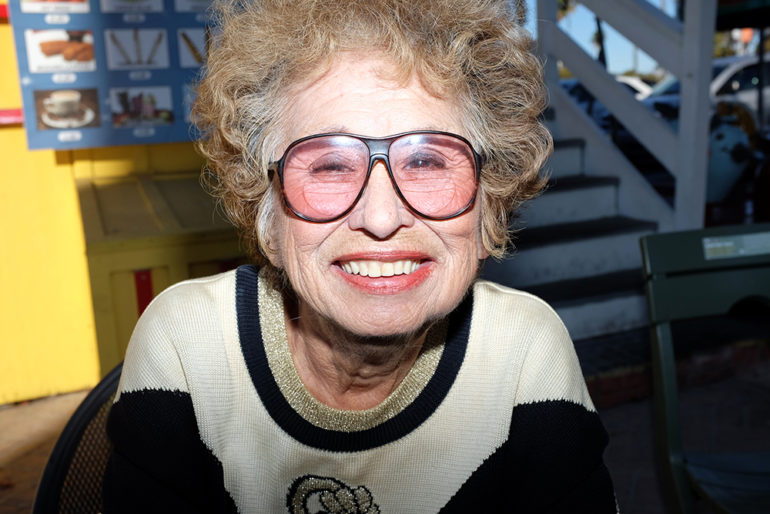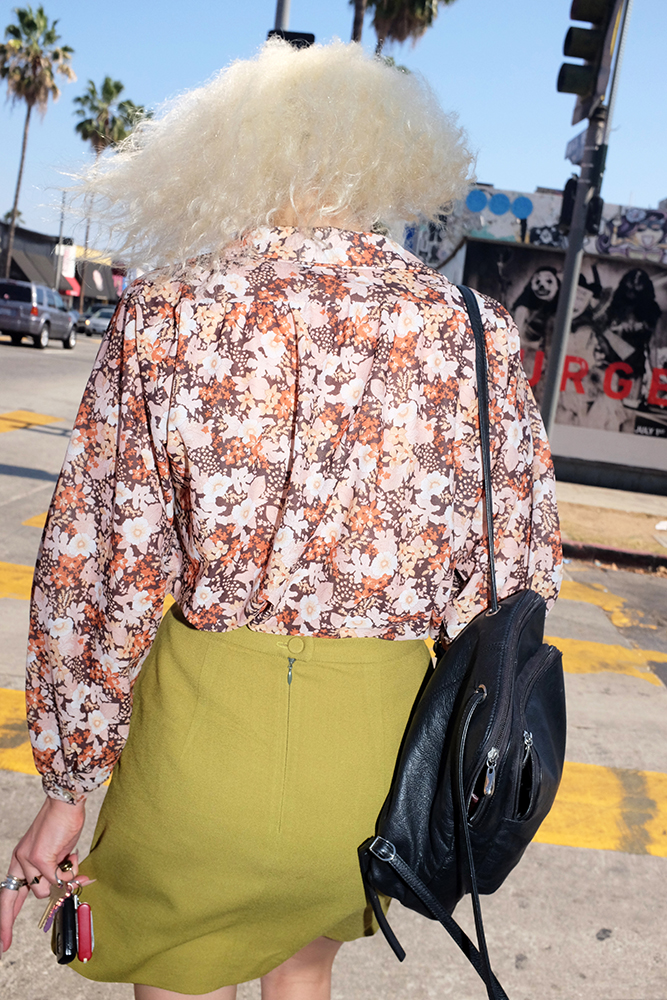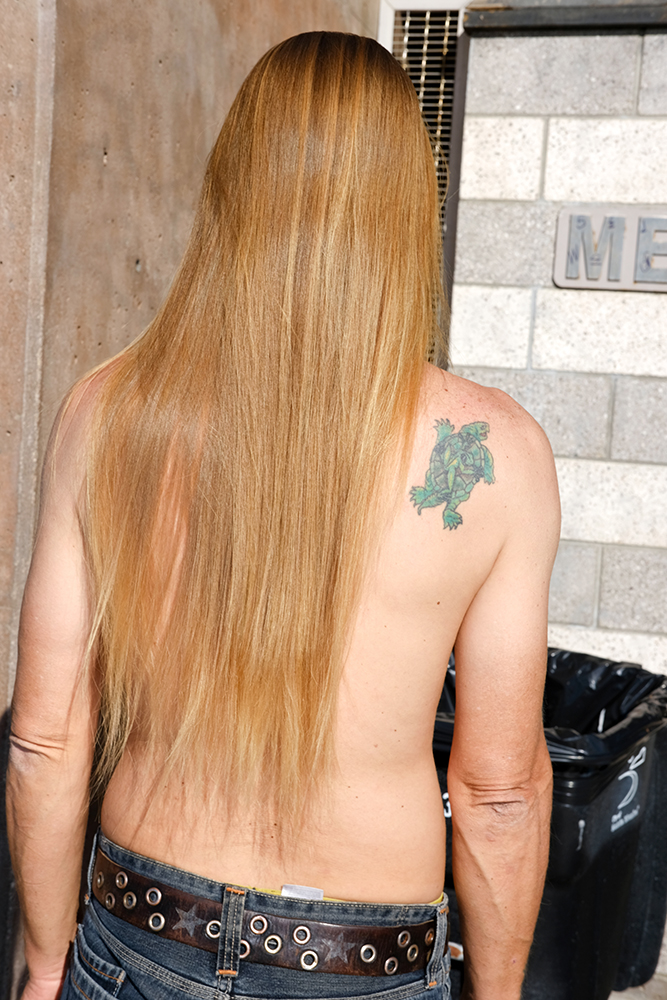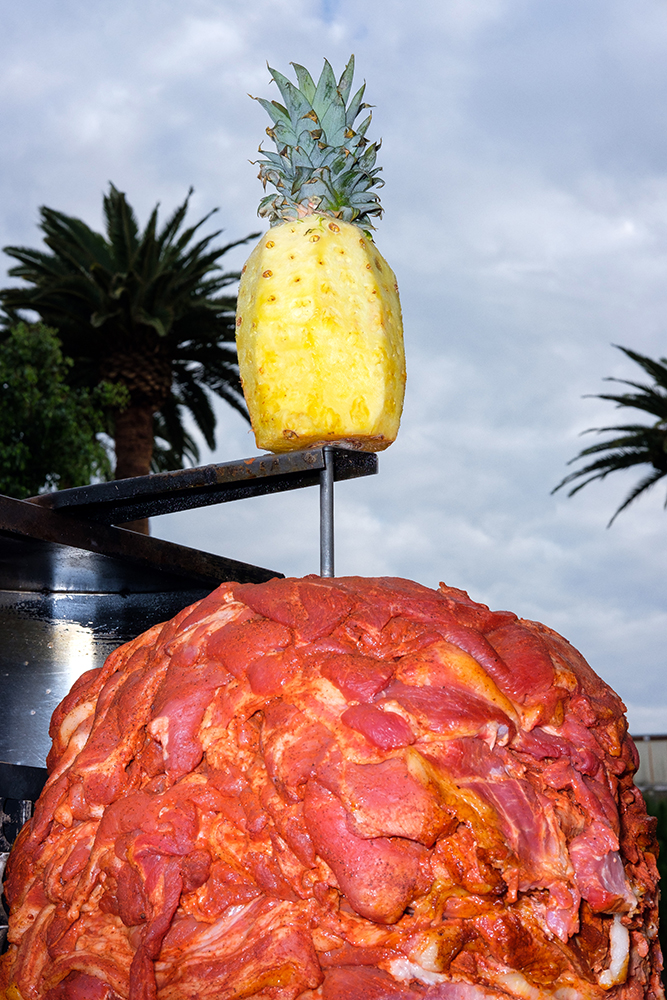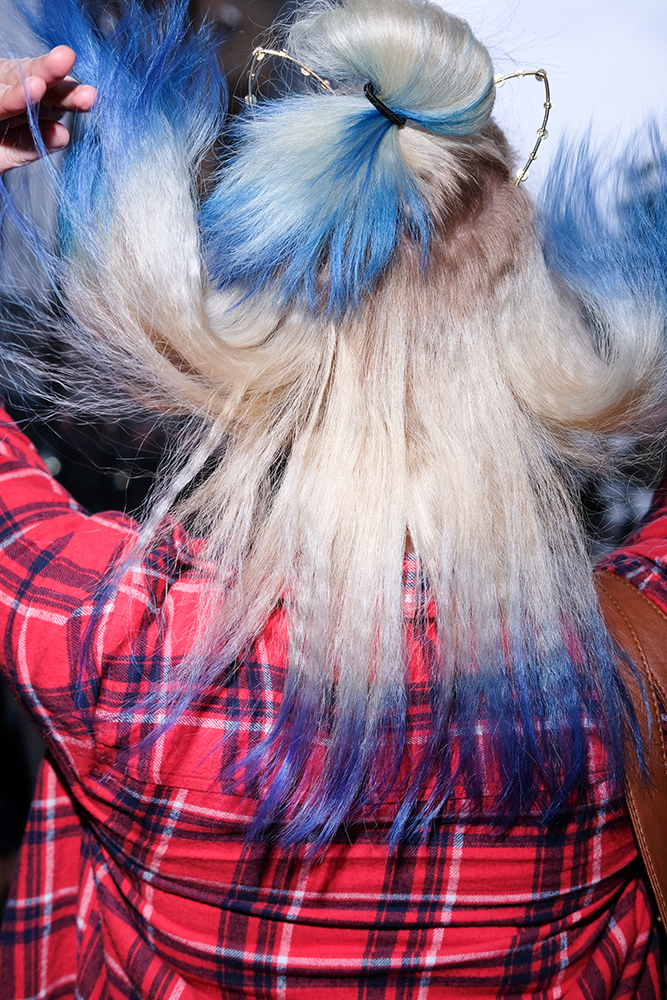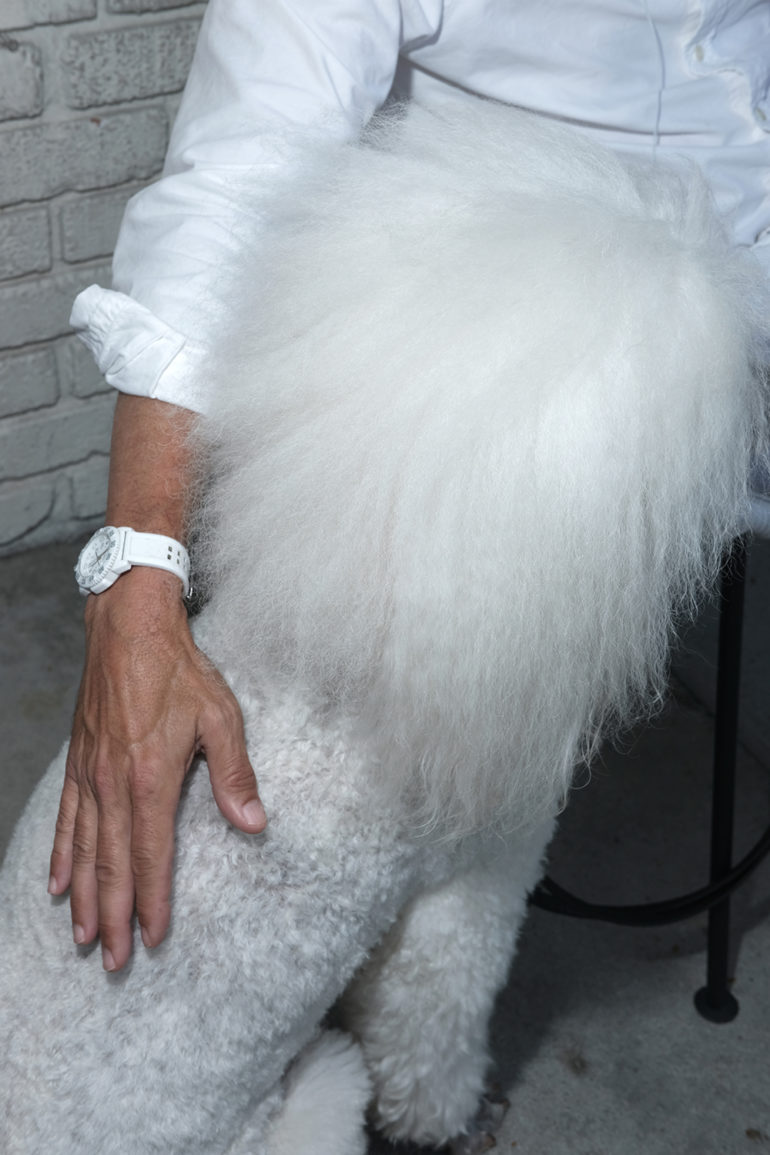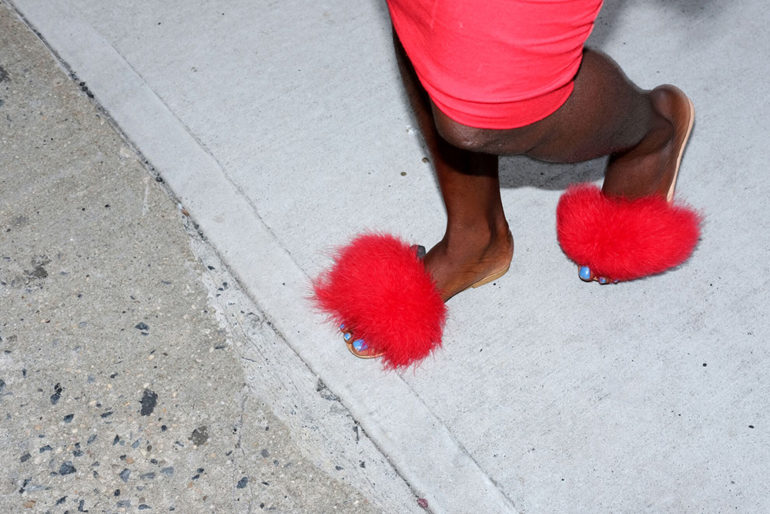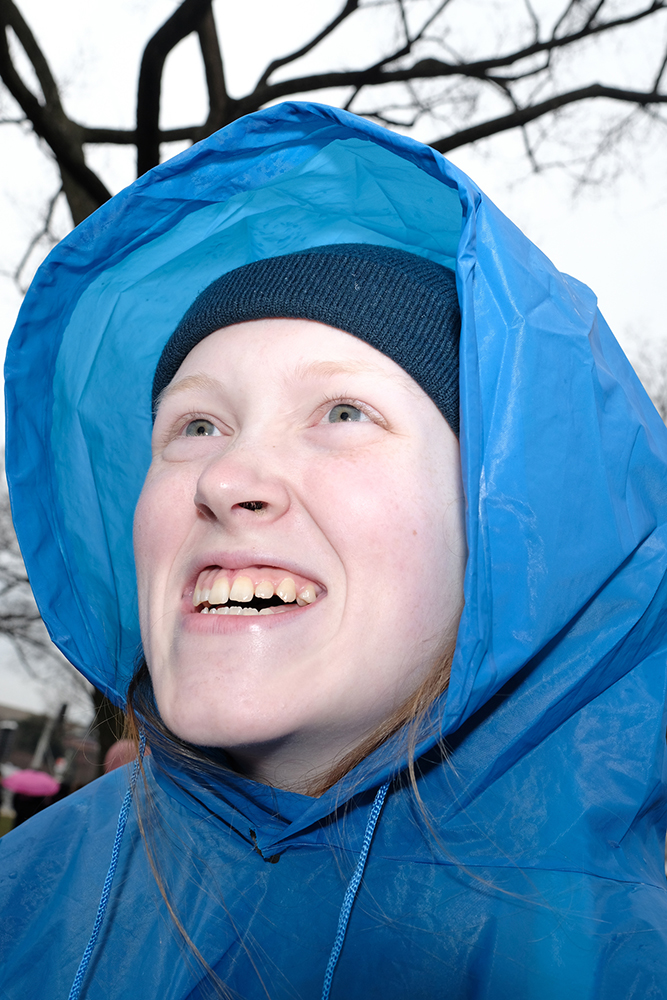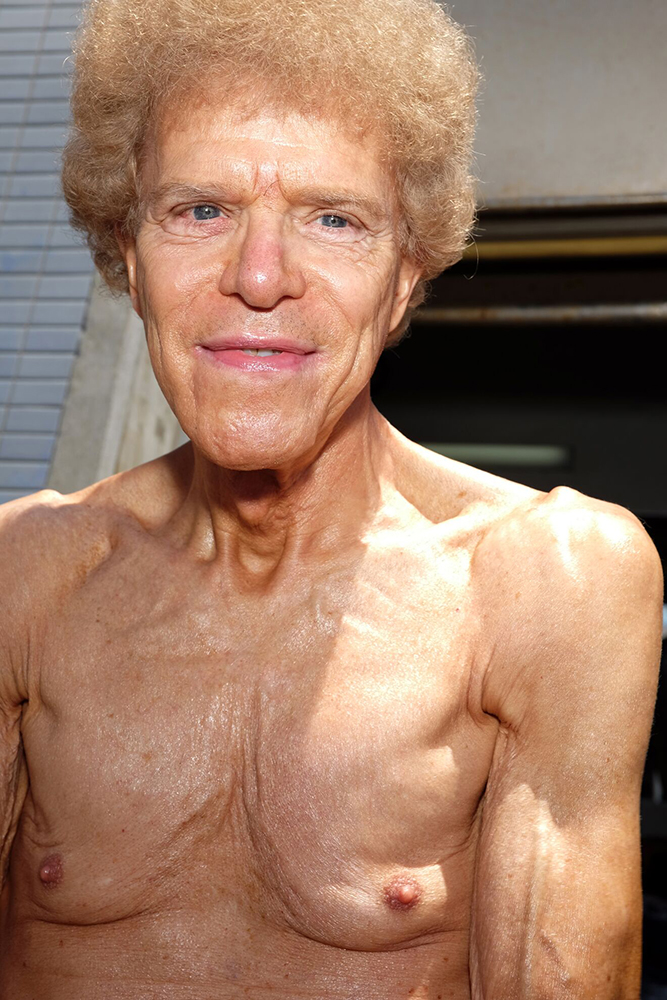Last Updated on 11/05/2017 by Chris Gampat
All images by Michelle Groskopf. Used with permission,
Photographer Michelle Groskonpf is a fine art street photographer who shoots in a style and subject matter you don’t really see anywhere else. The LA based artist says she used to be a “creeper” but these days finds happiness in the small moments of intimacy. That’s very evident by her Instagram and she’s now on a mission to make her photos into a book. Michelle’s book is called Sentimental, and she likes to bill it as more of a monograph than a coffee table book. Michelle got her start in photography during some troubling times in her teenage years. And like many others, she found a way to creatively express herself through fine art photography. Her style combines street portraiture with bright flash that brings us all the details of a person’s face. Michelle believes that everyone, in their own way, is both important and urgent.
Phoblographer: Talk to us about how you got into photography.
Michelle: My early teenage years were a mess. I was bullied a lot, I was restless and would spend a lot of time skipping class reading by my locker. My grades dropped and there were threats of suspension. What do you give a young outsider to help draw them back in? To help make them present. It was my high school art teacher that turned things around for me. She taught me all about photography and film. Talked to me about my ideas and gave me a platform in which to express myself and explore the world. I’ve carried that with me ever since. I owe the direction of my life to her really. I do my best to continue the circle by teaching underprivileged kids photography through organizations like The Lucie Foundation, Youth Arts and EduCare. Photography as an artistic pursuit is a powerful tool for engaging the world and the self.
Phoblographer: What made you want to get into street photography?
Michelle: I shot a lot of work in NY without telling anyone. NY is such a judgmental place that my private photography practice gave me a break from the rest of my life. It was something I did just for me. All those years of shooting without really sharing allowed me to develop a discipline and my approach and style without outside influence. I feel very fortunate for having had that period of growth and privacy. Now of course I tend to overshare! Ha. But those early years were crucial to building my love for shooting in the street.
“I was a creeper initially and would push myself to seek and find small stories developing on the street.”
Phoblographer: Your work seems to draw influence from Bruce Gilden in some ways and it seems like you even use his style of working except that you’re mostly acting with consent. Can you talk to us about your influences?
Michelle: I studied filmmaking for a large chunk of my life and then went on to produce and work as a graduate film production professor in NY. Film was my introduction to image making, not photography. I’m completely self taught and spent very little time learning about the history of photography. Bruce would be very upset to hear that! He stresses the importance of knowing the craft through your place in it. I disagree. I’m more like a wild animal in that I believe in order to truly express yourself you need to ignore traditional influences. My aesthetic comes from early cinematography, especially Orson Welles’ use of camera to build caricature and personality. I loved the early screwball comedies and the masterful work of Billy Wilder and Ernst Lubitsch. I also credit my family and my suburban Jewish upbringing for building my language. Big hair, big nails, colors, teenagedom and awkwardness.
There is a ton of crossover in life and work. People tend to speak the same language as others and that’s a beautiful thing. At some point in my life I chose to get close and explore the hugeness of details and faces, as there have been others and will be more to come. It’s an impulse we share. Just like other photographers grab at the bigger picture. Everyone brings a little something something to the table. I love Bruce. I’ve had the pleasure of spending some time with him. He’s the nicest guy and a true master. Uncle Bruce.
Phoblographer: Why is a flash so important to your street photography?
Michelle: Flash is my chunky paintbrush and brushstroke. It’s me declaring that there is obviously a photographer here interpreting this moment. It’s me in the act of creating. It’s a beautiful tool that allows me to make a star out of a hand, which is very deserving of a hand in my opinion. There is an earnestness that floods the frame when you shoot without flash. A seriousness of tone. I’m not an earnest person. It also changes the way I work. I don’t much like creeping or hiding. Flash doesn’t allow you to hide. There are consequences for good or bad to each shot. It keeps me in line and thinking about why I am doing what I am doing.
Phoblographer: How do you think your style has fundamentally evolved since you started shooting?
Michelle: I was a creeper initially and would push myself to seek and find small stories developing on the street. I did that for years and years. I was a real ninja but honestly it felt a bit impersonal for me. So my main evolution has been in moving significantly closer, shifting from context to detail. When I moved to LA from NY it triggered a wave of sentimental nostalgia for me. It reminded me very fundamentally of my suburban childhood. The more I looked around the more it tugged on my heartstrings and brought back these acute memories. I ended up using my camera as a device to frame the things that triggered memory. That’s what Sentimental is about. That’s what flows through all of my recent work from the last 5 years.
“Bruce would be very upset to hear that! He stresses the importance of knowing the craft through your place in it. I disagree. I’m more like a wild animal in that I believe in order to truly express yourself you need to ignore traditional influences.”
I don’t always think of myself as a photographer. I use photography to explore ideas but I’m sure if I could paint I would do that too. I also love to write and I played the drums for most of my life so the tool has only ever been the tool. I’m more interested in the idea behind it all.
Phoblographer: What do you feel typically attracts you to the people that you photograph? Have you noticed those patterns in your work at all?
Michelle: It’s all guts and intuition. These people and details attract me. They make me feel strongly so like a perfumer I want to bottle it up and share it and think about it. It’s definitely a compulsion for me. That’s why I shoot so much. I feel drawn to these people and I have to photograph them. It’s that simple. The themes that run through my work make up my life. They are a visual representation of how I see and what I am interested in. It’s a diary but catalogued through strangers.
Phoblographer: Do you feel like these people have some sort of genuine, urgent importance at all or do you feel like they’re more part of your creative vision and in some way are just collaborators in your orchestra?
Michelle: Everyone is urgently important. All of us. That’s the joy of doing this. We don’t always see the value in our everyday lives, only the big important moments, the overtures. But I think we live in the details. The moment I started getting closer and using flash was the moment I gave in to being open to momentary intimacy between strangers. That’s very hard for me. And often for the people I photograph. I get yelled at a lot. Not everyone wants to be exposed to that kind of vulnerability. I get that for sure. The larger truth for me is that in the end the photographs say way more about me then the people in the frame. It’s a rather intense cataloguing of my likes and dislikes and rapid thought process as I go about my business of the day.
Phoblographer: How do you think that a street photographer’s work differs when they interact with a subject vs simply shooting off candids? How do you think that the entire mentality of the moment changes?
Michelle: Girl don’t get me started! This goes out to all those obsessed with candid in street. I hate rules. I recognize the importance of them much like training wheels are important to kids learning to ride but they should never define the work. If you are out there using the street as your blank page you are participating in the history of street photography. I’d rather see wildly inventive original work any day than stale impersonal work made by rule pushers. I also think there is something profound in talking to strangers who you may never have had the opportunity to engage with otherwise. What a gift. That’s the mess of life. Bumping into each other. Sometimes I talk to people, sometimes I grab it and walk off, often I grab it, talk a bit, grab it again. I get yelled at and questioned and on a good day I’m flying through it and everyone is smiling or flattered or into it. As long as the work is good and clear and says something to at least me. There is no such thing as untainted photography. We are all making choices and framing things. There is no such thing as real or candid photography. Only choices. Do what you need to do, to say what you have to say. Just do it with respect and kindness. That’s my rule.
Phoblographer: So now you’re in the process of making a book of all your work. Tell us a bit about it. Of course, it’s a coffee table book but what makes your work stand out that much more than other photographers’?
Michelle: The book is called Sentimental and is being published by the incredibly supportive Magenta Foundation. They gave me a show several years ago and we’ve been planning this monograph ever since. It will be my first book and I’m very excited about it. This book is my way of tunneling back to my childhood and early adulthood through modern day Los Angeles. It’s a feeling and a sentiment and I’m very excited to share it with everyone. The imagery is a lot of fun.
I think of my work as a separate world. The best compliment has always been “I saw a photo and right away I knew it was yours” or “I saw a Michelle Groskopf person today”. My photographs have a specific vibe and feeling and if you don’t get it now you will once you spend time with the book. It clearly invites you into my weirdo world. I’m also excited to see my photographs large and as tactile objects. I showcase my work on social media a ton but the photos work very well large. You’re really there with these people and are given time to meditate on the details. It’s the best way to experience my work. So please help make this a reality and sponsor my kickstarter!
Phoblographer: Talk to us a bit about the gear that you use?
Michelle: I use a popular mirrorless brand of camera but these days I think any camera will do the trick. I have a ton of flashes. I love Godox/Flashpoint and Cactus. They have both done a lot in bringing well priced strobes to mirrorless cameras. I’m looking to buy a Pentax 67 for a special project I’m gearing up for and to use in my studio. Film on the street doesn’t make sense for my street work because it’s too slow, expensive and I shoot too damn much, but it makes perfect sense for experimenting in my studio or for specific commercial or documentary projects.
Phoblographer: Where do you see your career in a year and how do you see yourself getting there?
Michelle: I hope to explore galleries over the next year once my book is released. A solo show is the next step for me. I just left my representation and am looking to partner with a great agency who sees the potential for my work in the commercial world. I love playing with teen culture, subcultures and fashion so it seems a natural fit.
I recently opened a small photo studio in Hollywood with my partner Sasha Tivetsky. It’s called Rad Place. I want to see what will happen when I bring my outside people indoors. Experimentation really excites me. And of course I also think about getting back to the moving image so video is definitely on the horizon. Skies the limit really. For now I’m looking to get this book made so please visit my Kickstarter and preorder your copy!


